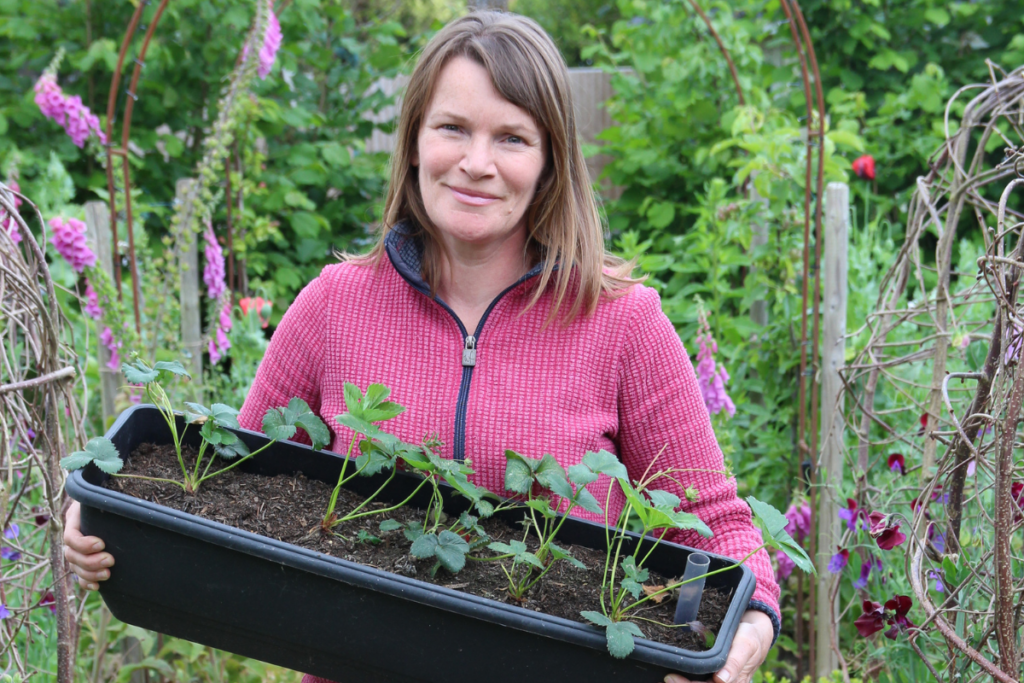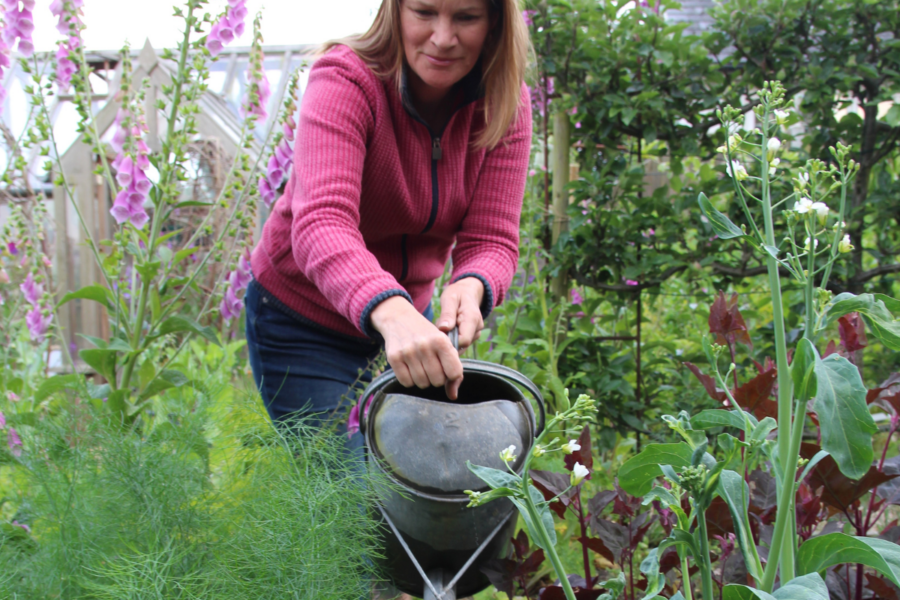Lucy explains how to make the most of the next few weeks
Be water-wise
We’re highly aware these days of the weather. Frequent gluts and dearths of rainfall can have a huge impact on our plots, plants and yields, so how should we best deal with the corresponding uncertainty? I have a few ideas for you:
1 – Mulching: In times of drought a thick (4-5cm) layer of organic matter (be that garden compost, bark chips, leaf mould or well rotted animal manure) helps lock soil moisture around crop roots. Ideally lay this in spring when earth is naturally damp. If you have to lay it now, thoroughly water dry soils beforehand.
2 – Trenches: Simply dig a 20-25cm deep gully alongside edibles then periodically flood it with water – this moisture will slowly soak into the crop’s root zone (the gulleys offer some relief when rain falls heavily, too). An upturned bottle alongside individual large plants (e.g. squashes) also works just as well.
3 – Crop stages: If water is scarce, focus your irrigation efforts towards sensitive stages of crop growth. Seeds need ample moisture to germinate, flowers need a good supply of water for maximum pod/fruit set, and young fruits/pods appreciate adequate irrigation to swell to a respectable size.
4 – Timing: Get into the habit of irrigating first thing in the morning. Evening irrigation encourages slug and snail activity, and daytime water is often evaporated off and lost via the heat of the day. Water early in the morning when conditions are cool.
5 – Method: I know overhead sprinklers are time-saving, but directing water solely to the roots of your crops is a far more targeted, conserving approach. Soaker hoses laid along rows are a treat, but most of us will opt for a watering can instead.
6 – Crop choice: Plant drought-resistant edibles (e.g. summer purslane, asparagus, amaranth, globe artichokes) in hot, sunny spots and choose shadier, cooler locations for thirsty plants such as Florence fennel, celery and celeriac.
Look after summer strawberries

Did you enjoy delicious harvests of home-grown strawberries this summer? I did! Many didn’t travel more than an arm’s length off the plant, as the temptation to pick and eat them immediately was just too much for my family, friends and neighbours. Eating a strawberry still warm from the sun is one of life’s sweet treasures.
All odd shaped fruits are safely in the freezer, ready for a winter jam making session, and my attention now turns to bulking up the plants for next year. I’ll move plants to a site out of full sun to stop them drying out, and will regularly apply a balanced liquid feed from now until late August. Simultaneously, any faded foliage will be sheared off to encourage a flush of new, vigorous growth. My plants are various ages – those less than three years old will crop well next year, but older plants tend to be less productive. For these mature plants my aim will be to peg down and root runners from healthy plants, to provide me with new stock.
Find more tips, advice and articles like this at the Amateur Gardening website. Subscribe to Amateur Gardening magazine now





